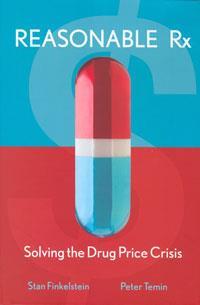Reasonable Rx: Solving the drug price crisis

S Finkelstein and P Temin
London, UK: Financial Times/Prentice Hall 2008 | 208pp | ?16.99 (HB) ISBN 9780132344494
Reviewed by Richard Lewis
This book is, in essence, a political treatise arguing that the American health care system is broken and needs to be fixed by the American government. Actually, the book is not that bad, if one can put aside the grating statements about the death of innovation and lack of worthwhile basic research anywhere but the US. It takes a while to get going, starting by describing the ills of the current system, which are more wittily satirised elsewhere (for example pharmagiles.blogspot.com).
The topical nature of the book leaves inevitable hostages to fortune (the Vytorin collaboration is held up as a glowing example of the way forward). Despite admitting that the general thrust of the arguments presented are correct, I baulk at the solution. In addition to meeting FDA criteria, potential drugs would be submitted into a government-sponsored auction system by the R&D firms, at various stages in their evolution, anywhere from Phase I to III.
The financial return to the submitting firm would be determined by unmet medical need, and what the sales and marketing firms would be prepared to bid. Government and philanthropic foundations would sponsor orphan and high need/low return indications, with minimum bid prices set via an independent review body. The marketing firms would take the risk of creating the sales revenue on their investment (including novel indications), plus any liabilities on adverse effects (qv Vioxx).
There must be complete independence between the R&D and marketing firms. The hope is that this model would reduce the need for blockbusters to sustain growth, incentivise research towards unmet medical need and lower prices generally. The successful precedent for this model is given as the break-up of the telecommunications industry. The unwritten assumption is that the importance of the American market, and need to access basic research in the US, will wag the multinational dog of the pharmaceutical business.
To repeat, this is a political book about future US healthcare policy. It will interest those involved in understanding and shaping the strategic direction of healthcare systems. It does not give much insight per se into the industry, or the science of drug discovery, and may become quickly outdated by events. However, if one believes that every journey begins with a first step, it is a useful contribution to a debate that has to happen.












No comments yet